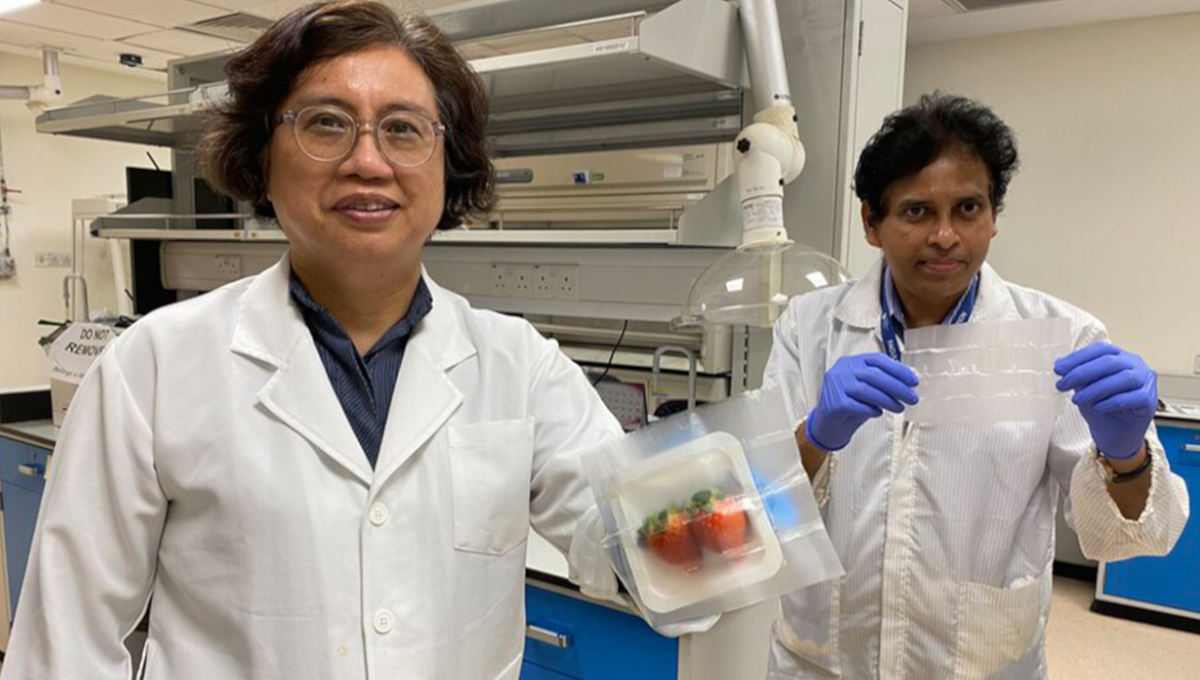[ad_1]
Scientists at Harvard TH Chan School of Public Health and Nanyang Technological University Singapore have developed a biodegradable food packaging material that kills harmful microbes and could extend the shelf life of fresh fruit by two to three days.
Having an antibacterial and biodegradable alternative to food packaging could be extremely beneficial for waste reduction and food safety. According to the US Environmental Protection Agency, containers and packaging make up a significant portion of municipal solid waste, amounting to 82.2 million tonnes of production in 2018. Packaging is defined as the products used for pack or protect goods, including food, drink, medicine. and cosmetic products.
The new packaging is intended for food products such as raw meat, fish, fruits, vegetables and ready meals. Professor Mary Chan, director of NTU’s Center for Antimicrobial Bioengineering which co-led the project, said the team’s goal is to replace conventional plastic packaging with the new material which will also double the shelf life of the products. .
“Vegetables are a source of waste because even if they are refrigerated, they will still breathe, which will spoil after a week or two. With antimicrobial packaging, there is a chance to extend their shelf life. . . and also make vegetables and fruits look fresh over time, â€she said.
The new plastic-like food wrap is made from a corn protein called zein, starch and other biopolymers of natural origin, infused with a cocktail of natural antimicrobial compounds, including thyme oil. and citric acid.
When exposed to increased humidity or enzymes from harmful bacteria, the fibers in the wrap release natural antimicrobial compounds, killing common dangerous bacteria that contaminate food, such as E. coli, Listeria or mushrooms.
The packaging is designed to release the necessary amount of antimicrobial compounds in response to the presence of additional moisture or bacteria. This ensures that the packaging can withstand multiple exposures and last for months.
As the compounds fight all bacteria that thrive on the surface of the packaging as well as on the food product itself, it can be used for a wide variety of products including ready-to-eat foods, raw meat, fruits and vegetables.
According to scientists, one experiment showed that strawberries wrapped in the wrapper stayed fresh for seven days before developing mold, compared to their counterparts kept in conventional fruit plastic boxes, which only stayed fresh for four days.
Chan said their material will cost around 50 percent more than regular plastic packaging.
Companies considering the potential use of the new invention will need to assess the cost-effectiveness of extending the shelf life of their products.
(To subscribe to Food Safety News for free, Click here.)
[ad_2]

